Search Images
Browse Content (p. 1677)
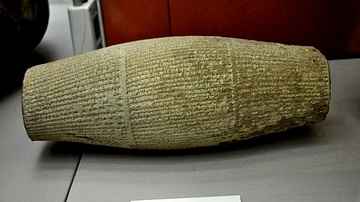
Image
Terracotta Clay Cylinder of King Nebuchadnezzar II
The three columns of cuneiform inscriptions on this cylinder mention the building and reconstruction of various shrines, quays, gates, and processional boats by king Nebuchadnezzar II at Babylon for the Babylonian New Year Festival. From...

Image
The Tomb of Horemheb
Horembheb facing the goddess of Hathor from Horembheb's tomb, Valley of the Kings, Thebes, Egypt, ca. 1300 BCE.
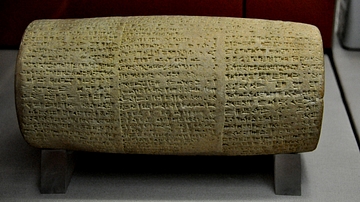
Image
Terracotta Cylinder of King Nabonidus
This cylinder includes three columns of cuneiform inscriptions that record the reconstruction and restoration of the temple of Shamash, the sun God, at Larsa, by the last king of Babylon, Nabonidus. Probably from Larsa, neo-Babylonian era...
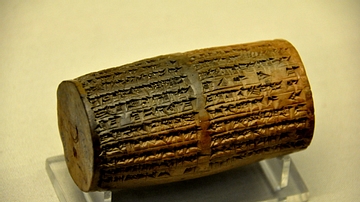
Image
King Nabonidus Clay Cylinder from Ur
This clay document tells us how Nabonidus (the last king of Babylon) built and reconstructed the temple of Sin, the moon God, at Ur. It also mentions a prayer for the king and Beslshazzar, his son. From Ur, neo-Babylonian era, 555-539 BCE...
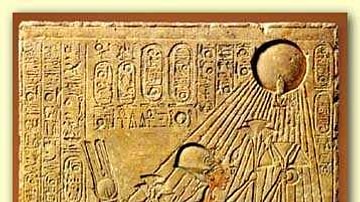
Image
Akhenaten Stele
A stele depicting Egyptian pharaoh Akhenaten (r. 1353-1336 BCE) and his family worshipping the Aten or sun disk.

Image
Boadicea Haranguing the Britons
Painting "Boadicea Haranguing the Britons" by John Opie (1761–1807). The painting is an 18th century imagining of how she may have looked like, which is the depicted style of dress is not representative of how ancient Briton women dressed.

Image
Briton Woman Warrior
This is a concept of how a Briton woman warrior, such as Boudicca, may have looked like.
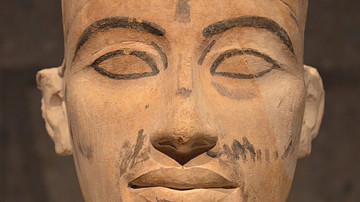
Image
Unfinished Head of Nefertiti
Unfinished model head of a statue of Nefertiti, 18th dynasty, 1351-1334 BCE. (Neues Museum, Berlin)

Image
Queen Nefertiti
A bust of Egyptian queen Nefertiti ("The Beautiful One Has Come", c. 1370 to c. 1336 BCE), the wife of the pharaoh Akhenaten of the 18th Dynasty of Egypt. By the sculptor Thutmose and rediscovered in 1912.
Neues Museum, Berlin.

Image
Kadesh Treaty
The treaty of Kadesh was written in Akkadian language in 1269 BCE. It was a peace-treaty which was concluded between Ramesses II (the Egyptian pharaoh) and Hattusilis (king of Hittite). These two tablets were found in Boğazköy-Buyulkale (the...